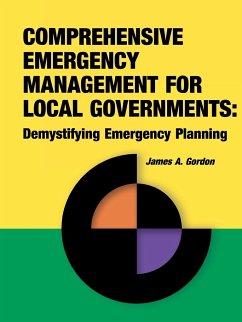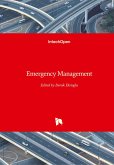COMPREHENSIVE EMERGENCY MANAGEMENT FOR LOCAL GOVERNMENTS: DEMYSTIFYING EMERGENCY PLANNING is a "how-to" guide for staff in small to mid-sized local governments. It is incumbent upon such local authorities to be as prepared as possible for the natural and human-caused emergencies that seem to be occurring with greater frequency throughout North America, whether large or small, urban or rural. Preparing for such an eventuality is not ad hoc or sporadic: it follows a logical process considering a wide range of important aspects well beyond what is traditionally considered emergency preparedness. Comprehensive Emergency Management (CEM) is a framework intended to guide novice emergency planners through the complete process of mitigation, preparedness, response and recovery. This work also includes an introductory chapter on the nature of local government emergency planning and a final chapter of tips on "putting it all together." Between these are detailed chapters on each of the four phases of comprehensive emergency management. The Mitigation chapter provides a thorough review of the concept of risk, risk assessment, management and communication. The Preparedness chapter constructs the preparedness plan which is an assembly of a general emergency management plan, four common priority plans covering public information, emergency social services, evacuation and telecommunications, and finally, hazard-specific preparedness plans for each hazard facing a community. The Response chapter covers the unique nature of response where the preparedness plan is put into use. Specifically, it addresses the scale of response by discussing mutual aid and supplementary resources. The Recovery chapter touches on the three cornerstones of recovery: staff, facilities and services. It also includes comments on the unique end to emergencies in addressing "Returning to Normal." Together they lead the emergency planner through the detailed process of compiling a comprehensive emergency management plan for their community. Beyond simply having the plan prepared, this book conveys the dynamic life of such a plan by stressing "the other 80%," which is training and exercising. Creating a training matrix for staff and developing a timetable of graduated exercises are those important steps beyond writing the plan that instill its principles and procedures. The book offers helpful advice on how a local government undertakes comprehensive emergency planning, who is assigned what tasks, and the ongoing obligations of those with such responsibilities. It is a treatment of the entire process of which writing a plan is only one part. There are many aspects to managing a successful, but more importantly effective, local government emergency program that are often overlooked by the novice or part-time emergency planner. This book provides a truly comprehensive view that any local government will benefit from.
Hinweis: Dieser Artikel kann nur an eine deutsche Lieferadresse ausgeliefert werden.
Hinweis: Dieser Artikel kann nur an eine deutsche Lieferadresse ausgeliefert werden.








